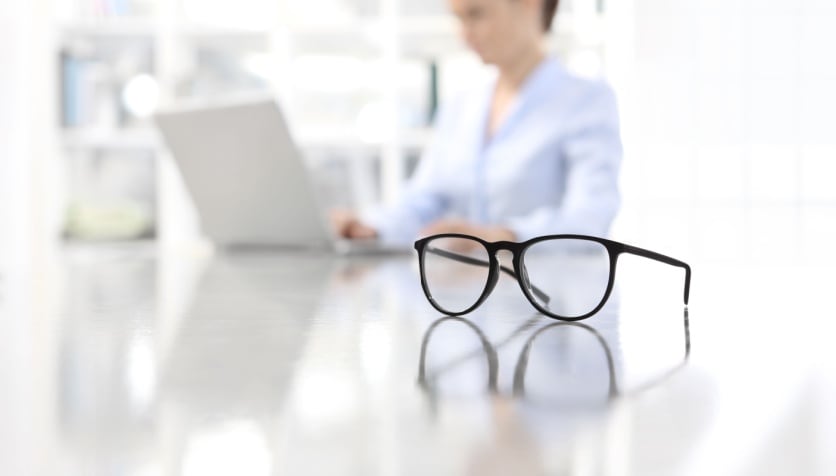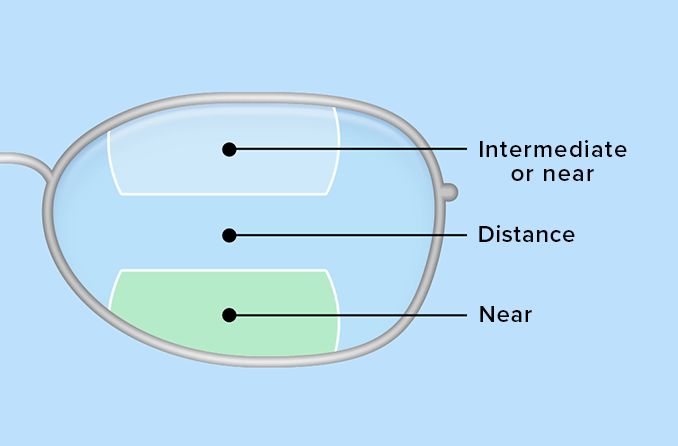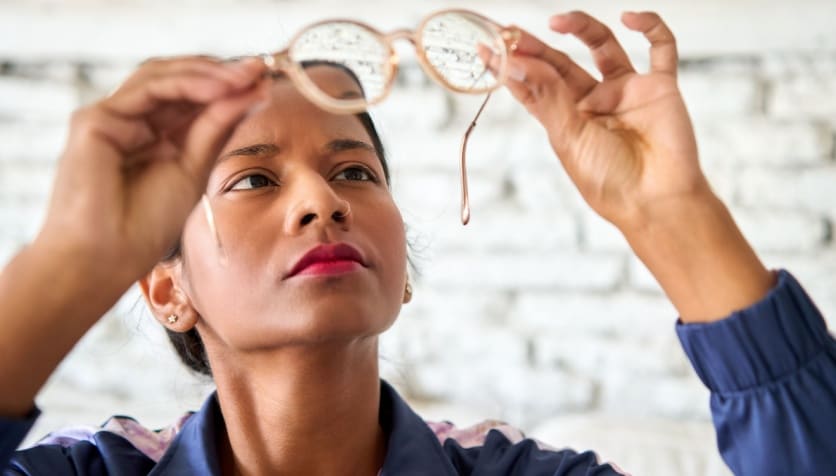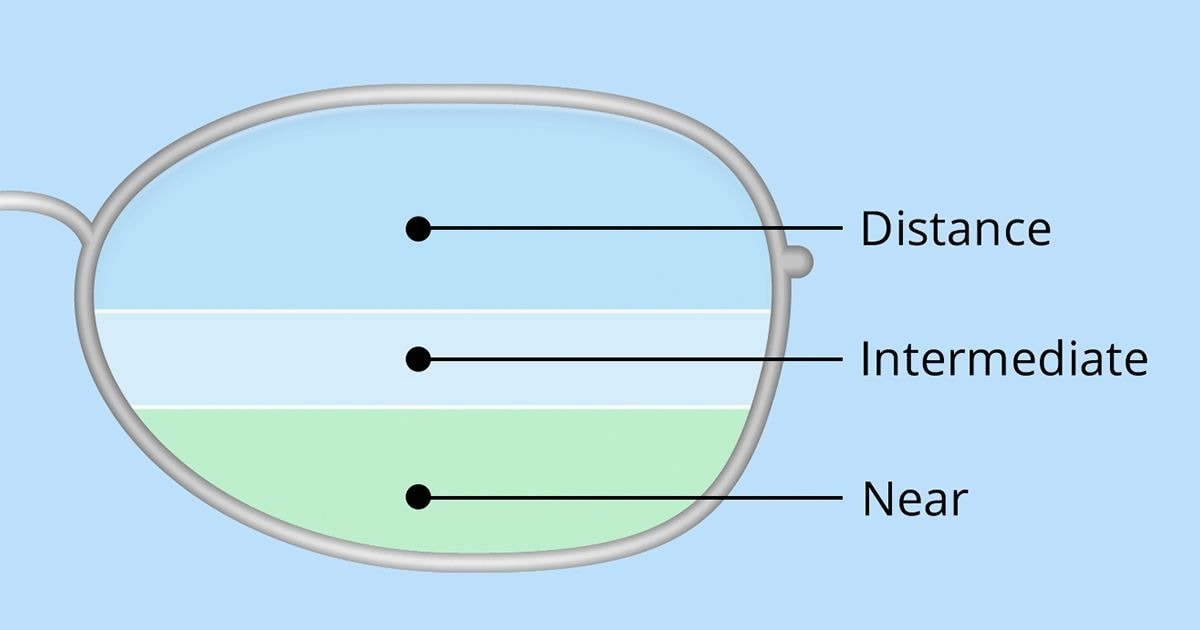Lori Steigerwald sees reading glasses from a unique perspective: She wears them and sells them.
Steigerwald has worn reading glasses for about 25 years. As national sales manager for retailer I Heart Eyewear and wholesaler Ron’s Optical in Livermore, California, she has sold hundreds upon hundreds of pairs of reading glasses.
As such, Steigerwald understands the importance of donning a pair of high-quality reading glasses if your up-close vision isn’t what it used to be.
“Consumers need to know what differentiates a good pair from a pair that, over time, can cause headaches,” she says. “Knowledge is what makes everyone a better consumer. When it comes to your eyes, you should not fool around.”
We’re not going to fool around, either. We’re here to give you valuable insights into reading glasses — what they are, when you need them, how to pick the right pair for your eyes and face, what the alternatives to reading glasses are, and what some of the common myths are about reading glasses.
What are reading glasses?
Reading glasses, available in over-the-counter or prescription versions, improve the ability to read something up close, such as a book or a computer screen.
Alabama optometrist Dr. Samuel Pierce, past president of the American Optometric Association, says over-the-counter reading glasses — which can be purchased at drugstores, department stores and other general retailers without a prescription — are designed for short-term wear, and are best suited for people who have the same lens power, or strength, in each eye and don’t have astigmatism, a common condition that causes blurred vision.
The Vision Council, a trade group, says the lens power of over-the-counter reading glasses typically ranges from +1 to +4.
Over-the-counter reading glasses are an acceptable option for people who have good distance vision (farsightedness), says Dr. Ming Wang of Wang Vision 3D Cataract & LASIK Center in Nashville.
However, if you suffer from computer eyestrain or double vision, then it’s wise to explore prescription reading glasses, Wang says.
Prescription reading glasses are meant to be worn for extended periods, Pierce says, and are ideal for people with astigmatism, myopia, serious eye disorders or unequal prescription strength in each eye.
SEE RELATED: Reader sunglasses: Who needs them
When do you need reading glasses?
Just about anyone in their 40s and beyond will, at some point, need reading glasses (or another type of near-vision correction), Wang says.
Reading glasses help compensate for diminished vision related to presbyopia, the normal age-related loss of the ability to focus on up-close objects, such as words in a book or a text message on a smartphone.
Dr. Michelle Andreoli, an Illinois ophthalmologist and clinical spokesperson for the American Academy of Ophthalmology, says you typically realize the need for reading glasses if you encounter trouble reading small print when you’re tired and when lighting in the room is dim, or if you find that it’s easier to read something when you pull it a little farther away from your face.
How do I pick the right reading glasses for me?
Before selecting your reading glasses — even the over-the-counter kind — visit with your eye care professional. Experts recommend a yearly eye exam to check for problems like glaucoma, cataracts and macular degeneration, even after you’ve gotten reading glasses.
For computer work, most people can get by with low-power reading glasses (+1.25 to +1.5), Wang says. For reading things that are closer, stronger glasses might be in order (+2.0 to +2.5). As you age, the power you need likely will increase.
Wang notes that some people require one lens power for general up-close reading and another power for extended reading like computer use — meaning that just one pair of reading glasses might not do the trick.
Pierce warns that headaches, eyestrain and even nausea can result from putting on reading glasses that don’t have the proper lens power.
Once you’ve determined the right power, then focus on glasses with high-quality lenses and sturdy frames, Wang recommends.
Depending on the quality, a pair of over-the-counter nonprescription reading glasses can cost anywhere from $1 to $50 or more; a pair of prescription eyeglasses easily can cost $200 and up.
“Lower-quality, less expensive reading glasses may be made with low-quality lens materials, which can cause vision distortion, color distortion or glare. This can contribute to difficulty focusing when reading. It is worth spending a little extra to get better visual quality,” Wang says.
When shopping for over-the-counter reading glasses at a store, Andreoli recommends:
- Grabbing a greeting card from the greeting card aisle.
- Heading to the rack where reading glasses are sold.
- Trying on glasses as you’re holding the greeting card at a comfortable distance.
- Selecting the glasses that let you clearly and easily see the greeting card.
- Making an appointment with your eyecare professional if you’re unable to decide on a pair of glasses.
From a style perspective, Steigerwald, the eyeglass sales manager, suggests choosing glasses that best fit your face shape and your fashion sense.
You might prefer smaller, more traditional reading glasses, she says, while someone else might opt for larger, chunky, outside-the-box frames.
You might even maintain a collection of glasses, as Steigerwald does, so you can switch your look whenever the mood strikes you.
If you’re torn about which glasses to buy, solicit an honest assessment — in person or via texted selfies — from a friend or loved one about whether the pairs you’re considering are flattering.
“You just have to find the perfect pair for your face,” Andreoli says. “And I think that with the perfect pair on, most faces look better in glasses than not in glasses.”
SEE RELATED: Can reading glasses ever help see distance?
What are the alternatives to reading glasses?
Among the alternatives to reading glasses are multifocal glasses, multifocal contact lenses and surgery (including monovision LASIK and refractive lens exchange), Wang says.
Of course, you can simply try to wing it without reading glasses, but that puts you at risk of eyestrain, which can trigger headaches, double vision and other problems.
What are some common myths about reading glasses?
One of the most common myths: Wearing reading glasses will cause your eyes to weaken. That’s not true, Wang says.
Yet another myth: Undergoing cataract surgery will fix your eyes, meaning you can ditch your reading glasses. That’s also not true, Wang says.
Andreoli notes that you might have underlying vision issues that can’t be corrected with reading glasses.
And then there’s the notion that reading glasses make the wearer look old. Eye care professionals dismiss that as an old way of looking at reading glasses, particularly considering that more than 150 million Americans wear vision-correcting eyeglasses.
“I like to remind people that studies show that many people feel that someone wearing reading glasses is often perceived as more intelligent than someone who does not,” Wang says.
READ NEXT: What are bifocal reading glasses?










